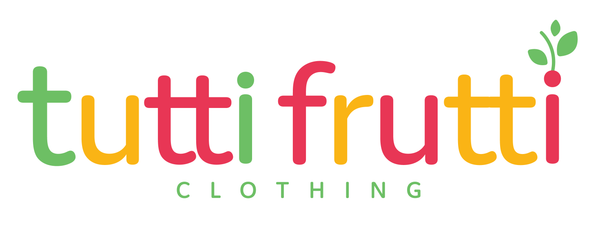
What to Look for when Buying Organic Children’s Clothes
I really want to buy the best clothes I can for my kids, don’t you?
I want clothes that look nice, wash well, last a long time and aren’t bad for the environment. I mean, we are being told that the fashion industry is the second most polluting industry in the world. We can’t escape the news articles and documentaries on telling us that fashion is drying up whole seas and chemical waste from fabric production is permanently damaging waterway in countries such as Indonesia.
But what can you do about it?
I am passionate that buying less and buying better is the main thing we can do the have a positive impact on the planet when buying clothes for our children.
But what is better?
One way to buy better is to buy organic children’s clothing.
What is Organic Children’s Clothing?
 Organic children’s clothing is clothing made from organic materials. Usually this is cotton but it can be other fabrics such as linen or hemp for example.
Organic children’s clothing is clothing made from organic materials. Usually this is cotton but it can be other fabrics such as linen or hemp for example.
Organic materials are grown separately and in a different way to non-organic crops.There are no hazardous chemicals, pesticides or fertilisers used in the farming of organic cotton.
Organic cotton is grown using agricultural practices that not only protect the environment and are better for our planet. organic farmers use natural practices that create healthier soil. Healthier soil hols more water and so this in turn reduced the amount of water the cotton plants consume.
Organic cotton is often watered using rain water. Non-organic cotton often requires farmers to extract water from the ground - which diverts water from surrounding communities who rely on that water. Cotton farming is responsible for the destruction of the Aral Sea.
Organic cotton is far less polluting that non-oranic cotton too. Organic cotton is grown without chemicals - chemicals that otherwise would run into the waters or when sprayed over crops enters the air.
Why Is Buying Organic Children’s Clothing is Important?
It is important to buy organic children’s clothing as it really is so much better for the environment, the health of the cotton farmers and workers who pick the cotton. Plus organic cotton uses much less energy than ordinary cotton too - and healthy organic soils store more carbon which helps to combat climate change
Organic cotton has also been shown to be softer and more durable than ordinary cotton. Most organic cotton is handpicked which preserves the fibres making organic cotton more durable than its non-organic alternative. Regular cotton i s also treated with harsh chemicals and bleaches during production. Organic cotton is largely chemical free and uses water based inks, dyes and finishing techniques - making it much kinder to skin and better for those that might suffer allergies.
How Can I Be Sure My Child's Clothes Really Are Organic?
Buying organic children’s clothing is a definitely a positive choice but it can be difficult to be sure that the clothing really is organic. Especially when there is a growing trend to label clothing as ethical or sustainable and not all ethical or sustainable clothing will be organic.
The simple answer to make sure you really are buying organic children’s clothes is to look for organic logos and certifications.
In the UK there are three main logos to look for – the Global Organic Textile Standard (GOTS), the Soil Association logo and the Textile Exchange Organic Standard.

The Soil Association and GOTS logo will show you that the processing, manufacturing, packaging, labelling, trading and distribution of all that garment are made from organic fibres. You can also be sure that strict ecological and social criteria have been met with regards to every aspect of that garment – including printing and manufacturing. This includes waste disposal, fair working conditions, no plastic packaging and no child or forced labour.
The Textile Exchanges Organic Standard verifies the presence and amount of organic material in a final product. It also tracks the raw product to the final garment so you can be sure that the material included in the garment really is organic. It is worth noting that “the Standard does not cover the certification of the raw material itself – that will be verified independently of the production process certification. It also does not address other inputs, environmental aspects of processing (such as energy, water or chemical use), any social issues or legal compliance”
If you look for these certifications and standards on your organic children's clothes you can be sure that the organic cotton is from a certified source.
If you have any questions or have something to add to the discussion please do leave a comment! I am always learning about this and would love to hear from you!
Further Reading: How Repairing Your Clothes Can Help Save the Planet
What is the Difference Between Oeko Tex and Organic Fabric?
Sustainable Children's Clothing: More Than Just Organic Fabric.
SHOP OUR AWARD WINNING ORGANIC COTTON LEGGINGS BELOW....
